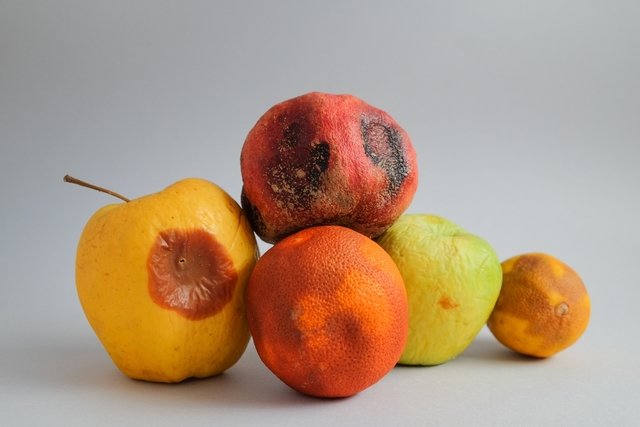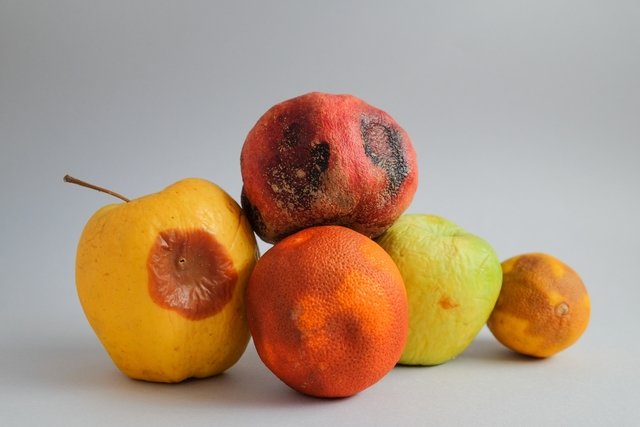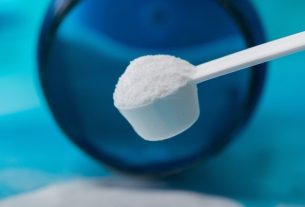The consumption of spoiled food can have consequences for health, as they may contain microorganisms or toxins that can lead to the development of an infection or food poisoning, in which there may be abdominal pain and discomfort, diarrhea, gas, vomiting, fever and weakness, with also risk of dehydration.
Therefore, to know whether the food is spoiled or suitable for consumption, it is important to observe some characteristics, in addition to the expiration date, such as:
- Smell;
- Cor;
- Consistency;
- Appearance.
To ensure greater durability of the product during its shelf life, it is important that the food is stored properly, otherwise it could spoil more quickly, as is the case with milk and dairy products, for example. Know how to properly store food.

Some guidelines to know if the food is spoiled and, consequently, should not be consumed are:
Ready meals and desserts
The slimy appearance, change in color and strong smell are indications that the food or dessert is spoiled, which can happen even in the refrigerator. Therefore, if there is a change in smell and/or viscosity, it is recommended to throw the meal or dessert away, and the container should be washed with water, detergent and a little bleach or chlorine so that it is properly disinfected for later use. .
Raw meats
The main characteristic to be observed in raw meat is the color, which becomes more gray, green or bluish when spoiled, and may also have a more intense smell. Pressing the meat a little with a finger also helps to identify the integrity of the food, because when it is viscous and should not be consumed, the meat does not return to normal when the pressure stops.
Raw or cooked fish
In the case of raw or cooked fish, it is important to pay attention to the smell, which becomes more intense when it is spoiled. Furthermore, the fish may have a brown or yellowish color and the eyes of the fish, when whole, become opaque, which is a sign that the fish is spoiled and should not be consumed.
Ovo
One way to assess whether the egg is suitable for consumption, without having to break it, is to do the glass of water test: place the egg in a glass full of water and if the egg remains at the bottom, it is good to eat. eat, however, if it floats, it is spoiled. The average duration of eggs is up to 21 days after laying, which can be seen in your box.
Fruits
To know if the fruit is spoiled, it is important to evaluate its appearance, as the fruit may have softer areas, be a little wrinkled, have a different color than normal or have holes on its surface, which means in this case that there may be an insect. in the fruit.
However, in some cases only a piece of the fruit is spoiled, and the rest can be consumed without harm to health.
Greens, legumes and vegetables
To know if vegetables are spoiled, it is important to evaluate their color, smell and appearance. When leaves are damaged, they tend to become yellower and softer, which is also a sign that nutrients have been lost.
In the case of vegetables, in addition to a change in color and smell, it is also possible to notice a change in their appearance, which may become softer, which is also a sign that they are spoiled.
Cheeses
To know if the cheese is spoiled, it is important to observe its color and texture, however it is also important to take into account the type of cheese. This is because some hard cheeses, even if moldy, can be consumed after removing the spoiled part, but soft cheeses should not be consumed if they are dry, greenish or moldy.
Milk and dairy products: Smell
The main sign that milk is spoiled is a sour smell, which can happen even if the milk is stored in the refrigerator. Furthermore, in some cases, when milk is thrown away, it is possible to observe a greener color.
What happens when you eat spoiled food?
When eating food that is unfit for consumption, food poisoning or infection may occur due to the presence of toxins or microorganisms, respectively, in the food, resulting in the appearance of some symptoms such as:
- Abdominal pain and discomfort;
- Intestinal colic;
- Gas and belching;
- Diarrhea;
- Fever;
- Nausea, nausea and vomiting;
- Weakness;
- Deeper eyes, which could be a sign of dehydration.
Symptoms may appear minutes, hours or a few days after consuming spoiled food, and it is important that the person eats a light, easily digestible diet and drinks plenty of fluids throughout the day. The use of antidiarrheal medications is contraindicated.

Sign up for our newsletter and stay up to date with exclusive news
that can transform your routine!
Warning: Undefined array key "title" in /home/storelat/public_html/wp-content/plugins/link-whisper-premium/templates/frontend/related-posts.php on line 12
Warning: Undefined array key "title_tag" in /home/storelat/public_html/wp-content/plugins/link-whisper-premium/templates/frontend/related-posts.php on line 13




